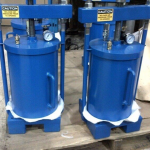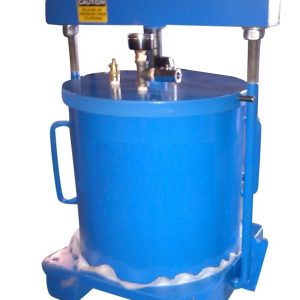Our Laboratory Pressure Filter are some of the most affordable and best built on the market today.

Offered in tabletop or floor mounted designs.
- Mild steel construction
- Hand wheel for quick opening
- Pressure relief valve (70 psi.)

- Quick release air connection
- Air release valve
- Oversize rubber seal gasket
- Stainless steel backing screen
- Filter cloth










